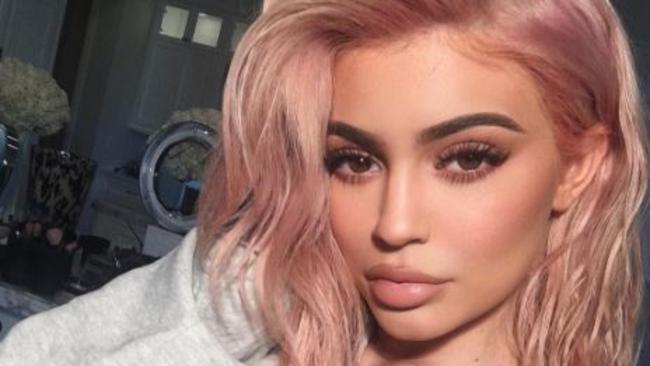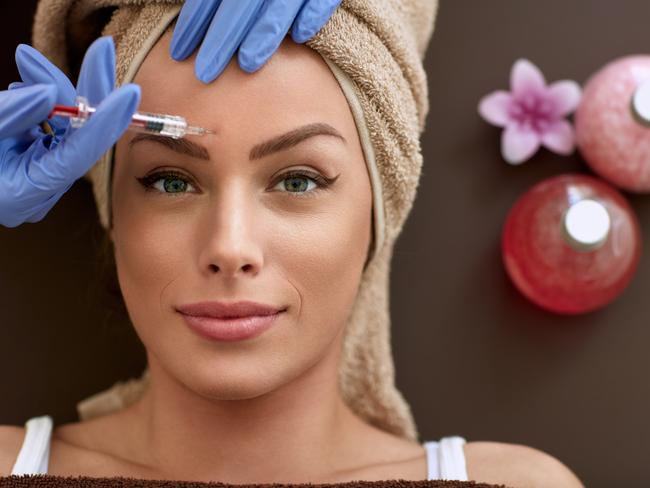Are injectables the new normal for young women?
THEY’RE the beauty trends driven by Instagram influencers and the Kardashian juggernaut — and more and more young women are heading into cosmetic clinics to get them.

Live News
Don't miss out on the headlines from Live News. Followed categories will be added to My News.
- Australia overtakes the US in cosmetic surgery
- Sydney’s cosmetic horror: ‘Implants were leaking’
- Inquiry into cowboy cosmetic surgery industry
IT’S been dubbed the ‘Instagram face’ — a combination of plump lips, slim jawlines and contoured cheekbones — and to get it, more young women are heading to cosmetic clinics.
Women aged 18-25 are increasingly using injectables like Botox and dermal fillers in their lips, cheeks, chin and foreheads in pursuit of beauty aesthetics popular on social media.
While there’s no official data on the number of non-surgical cosmetic procedures, industry estimates suggest demand for anti-wrinkle injections and dermal fillers has almost doubled in Australia in the past five.
Anecdotally, 18-25 year olds are the fastest growing group seeking out injectables, and they’re using them to change their appearance rather than just enhance natural features, says Dr Michael Molton, President of the Cosmetic Physicians College of Australasia (CPCA).
That’s in contrast to 35-55 year olds, who still tend to seek more natural improvements to revitalise and enhance rather than alter their look, he said.
With the rise of low-cost clinics and increased promotion on social media, non-surgical cosmetic procedures have become more normalised among young women. But there is growing concern expectations are being skewed by edited and enhanced images online.
“Those who compare themselves to social media images are often judging against enhanced pictures that don’t reflect reality,” said Dr Michael Molton, President of the Cosmetic Physicians College of Australasia (CPCA). “It is also quite likely that the person attempting the comparison may suffer from low self-esteem and not have a strong sense of self worth.
“Wanting to look better, not different is a natural and normal instinct. However, there seem to be more and more extremes emerging, that is, the trend to attempt to look both better and different.”

Dr Molton said the use of apps such as Facetune to morph features, together with peer pressure and social competitiveness, was also fuelling a desire for extreme appearances that include overfilled lips, and distorted facial proportions.
In an industry where inexperienced and unscrupulous practitioners continue to operate, patients were at risk of getting procedures which were inappropriate and unsafe.
“When it comes to injectables, in many instances it seems the patient may not be advised that their desired appearance is not ‘achievable’. They are not being told: ‘Sorry, if I do that, your appearance will be significantly distorted and unnatural’.
Consumers should be wary of practitioners who implement high-pressure sales techniques, cut-price offers, pay-later schemes and who promote services with altered imagery.
“It is also vitally important that a patient has a face-to-face consultation with a medical practitioner to discuss potential side effects as well as post-treatment follow-up and any other questions they may have,” he said.
While filler and anti-wrinkle injections like Botox are non-surgical there are serious risks associated with their practice. Dermal fillers have been associated with stroke, and blindness.
Professor Mark Ashton, president of the Australian Society of Plastic Surgeons said the ASPS wanted better regulation and uniform laws across the states to protect patients.
“We remain concerned too many consumers are unaware of the real risk posed by non-surgical procedures if they are conducted by unqualified and inexperienced practitioners in unsafe environments,” Prof Ashton said.
“No cosmetic procedure is risk free and people should do their research to make sure their practitioner is legitimate. They can visit the AHPRA website to check they are registered.”
NEED TO KNOW
● All cosmetic procedures carry inherent risks of side effects and complications.
● Consumers should always shop based on the competence of the injector, not price.
● See a registered health professional who focuses on cosmetic procedures. Registrations and licences are a guarantee that people and products meet set standards and are held accountable if they don’t. You can check at the Australian Health Practitioner Regulation Agency.
● Anti-wrinkle injections and dermal fillers are Schedule 4 drugs and their illegal importation is a major concern. Always check the product being used is registered in Australia.
● It is also vitally important that a patient has a face-to-face consultation with a medical practitioner to discuss potential ‘side effects’, and post-treatment follow-up.
